With a degree of relief, I noticed that not a single bat seemed to be roosting inside Taiping Bat Cave (太平蝙蝠洞), half an hour by car from central Taichung.
I wasn’t scared of catching COVID-19, even though many scientists think the disease originated in bats. I was more worried that one of these nocturnal mammals would defecate on me. They’re as likely to loosen their bowels when resting during the daytime as they are when flying around at night.
Before driving to this spot, I’d not seen a need to confirm the presence of bats. My research had focused on practical issues, like distance. In fact, I’d set off with a strong suspicion I’d find no bats. Local toponyms aren’t always literal, and elsewhere in Taiwan there are “bat caves” without bat populations.
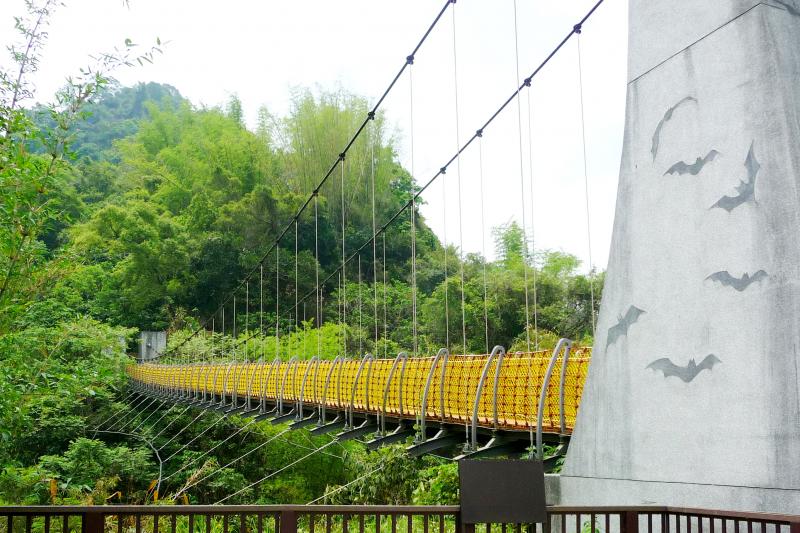
Photo: Steven Crook
The reason for this is simple. While some Westerners associate these creatures with vampires, or are repulsed by their fur and tiny teeth, Chinese tradition holds the bat in high esteem.
In his 1941 book Chinese Symbolism and Art Motifs: An Alphabetical Compendium of Antique Legends and Beliefs, as Reflected in the Manners and Customs of the Chinese, C.A.S. Williams explains that the bat “is emblematic of happiness and longevity [and so] frequently employed for decorative purposes.” This is because the second part of the word for “bat” (bianfu) matches the word for “good wishes” or “blessing” (福, fu).
Having scanned the cave’s ceiling for sleeping bats, and reassured myself that none of Taiwan’s 37 chiropteran species makes a home there, I ventured as far in as was possible. The cave is neither especially wide or deep; during the day, no flashlight is needed.
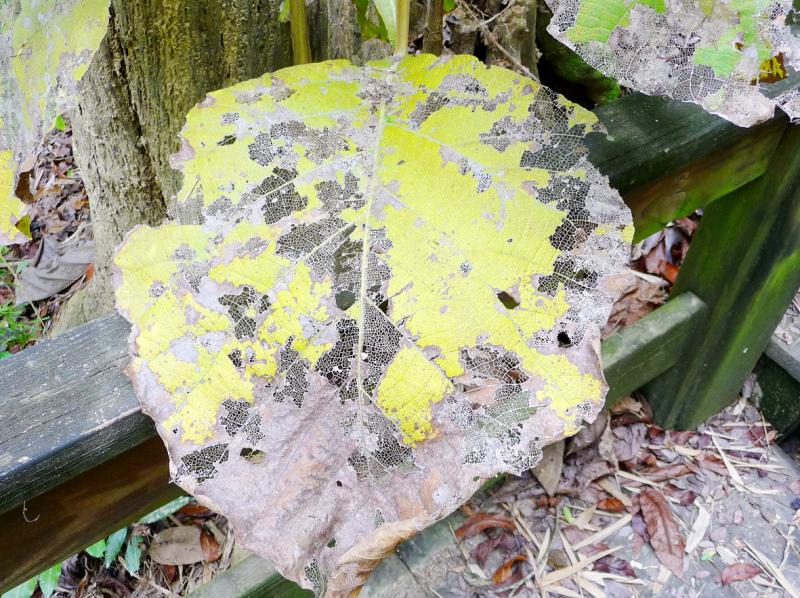
Photo: Steven Crook
The most curious feature was the rectangular slot, big enough for a slim adult to climb through, halfway up one wall. This, I could see, provided access to a passageway which soon turned 90 degrees, then exited the hillside less than 20m from the cave entrance.
A broken rope at my feet suggested that it used to be possible to clamber up into the slot from inside the cave. If you really want to explore the passageway, you can do so from the other end. I thought of doing that, but when I stuck my head inside, an awful odor caused me to change my mind.
An information panel near the cave explains the passageway’s origin. It was cut through solid rock more than 70 years ago at the behest of local landowners, to divert water for irrigation purposes. However, destruction in the wake of 1959’s Typhoon Billie, which caused the 8-7 Floods (八七水災) in central Taiwan, left it redundant.
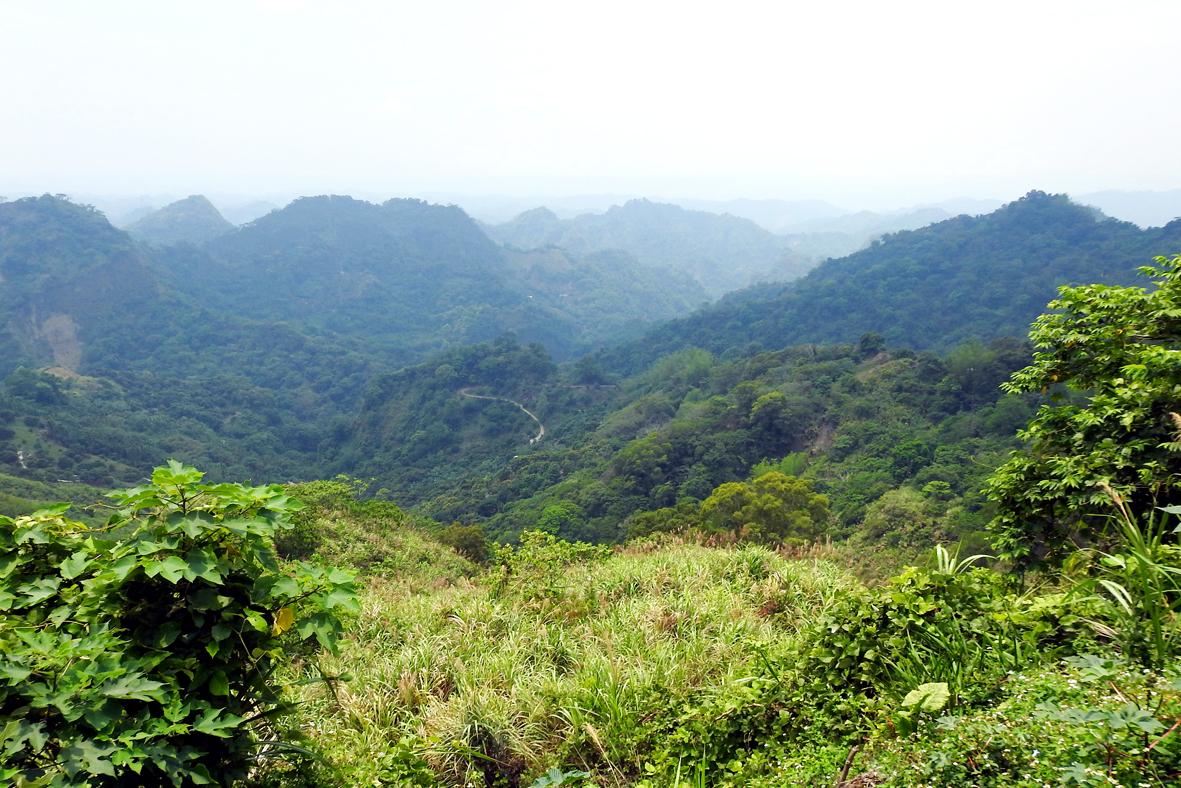
Photo: Steven Crook
Taiping Bat Cave may not be an attraction of national significance, but just down the road, closer to central Taichung, there are better reasons to visit this area.
Less than 200m from the cave, the local government has built a bat-themed footbridge across Toubiankeng Creek (頭汴坑溪). On the other side, a user-friendly trail climbs up through the forest, down toward and over a stream, then up to a viewing platform.
The path, officially dubbed the Bat Cave Extension Trail (蝙蝠洞延伸步道), is short but delightful. I’d covered barely a quarter of its 420m length when I noticed that the noise from Road 136 had given way to a forest soundtrack.
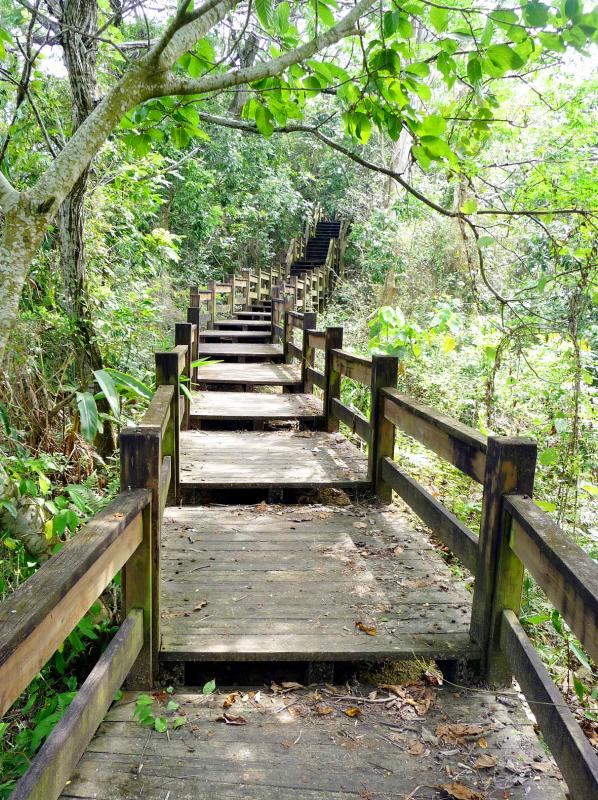
Photo: Steven Crook
If anything, the woodlands here are more appealing than those I’d hiked through earlier in the morning. And soon it’ll be possible to get deeper into nature. When I visited on April 22, workmen were putting the finishing touches to a branch trail.
CAOLINGSHAN HIKING TRAIL
I’d begun the day by taking Road 136 through the built-up part of Taiping District (太平) and into the foothills. I turned left when I saw a large sign for Beiji Temple (北極殿), and a far smaller one for Caolingshan Hiking Trail (草嶺山步道). Neither sign featured any English.
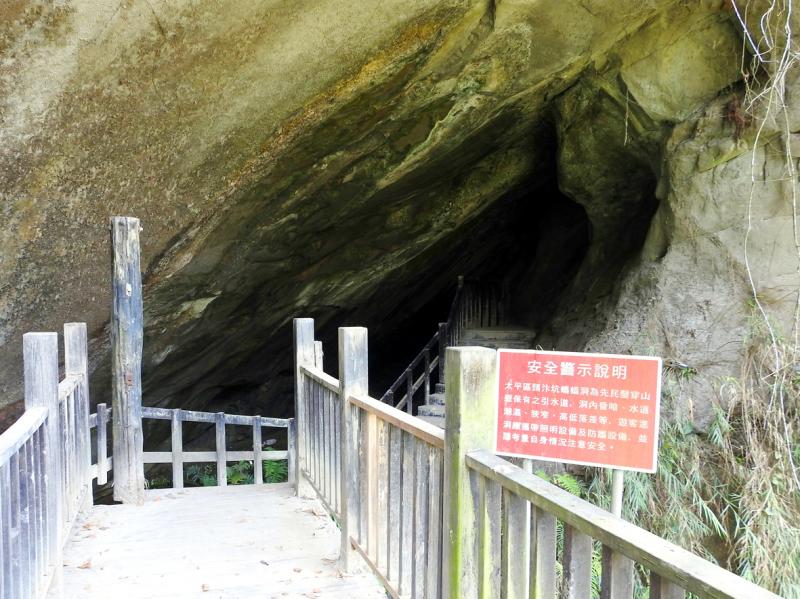
Photo: Steven Crook
Having no interest in the temple (which has been under construction for almost five years, but looks some way from completion), I parked at the base of Caolingshan, around 175m above sea level, and set off on foot.
I’m glad I didn’t try to drive further up the hill. The road is steep, and there are few places where two vehicles could pass. In dry conditions, you’d have no problem getting an ordinary car to the Caolingshan trailhead, but there’s nowhere to park once you get there. What’s more, walking from where I’d parked took barely a quarter of an hour.
Climbing up the wooden stairways to the highest point on the trail (altitude: 306m) took me less than 10 minutes. After resting beneath a pavilion, I continued east along a ridge, from which I could look over Huguo Cingliang Temple (護國清涼寺), a sprawling Buddhist complex which is also visible from the bridge that provides access to the Bat Cave Extension Trail.
Within 20 minutes, I’d completed not only the rest of Caolingshan Hiking Trail, but also the conjoined and remarkably short Fongzihlin Hiking Trail (楓仔林步道). At the entrance to the latter, I found a bilingual mapboard, a notice asking people to not feed stray dogs, and enough space to park several cars.
If you’d rather start your hike from the Fongzihlin entrance, turn off Road 136 into Lane 245, Changlong Road, Section 3 (長龍路三段).
My final objective in Taiping District, a sign informed me, lay 8.1km beyond the Bat Cave. Several hairpin bends later, I reached Chikanding (赤崁頂) at 665m above sea level.
There’s no village or facilities here; it’s neither the highest spot in Taiping, nor the loftiest section of Road 136. I arrived close to lunchtime on a hazy day, so the view over the hills to the west wasn’t as fine as it sometimes is.
I’d rather not end on a negative note, but I have to say that I would’ve enjoyed the panorama more if there hadn’t been so many cigarettes butts around my feet, and so much trash on the hillside. I’ve lived in Taiwan since the early 1990s. Since then, the cities have certainly gotten cleaner. Not so the countryside.
Steven Crook has been writing about travel, culture, and business in Taiwan since 1996. He is the co-author of A Culinary History of Taipei: Beyond Pork and Ponlai, and author of Taiwan: The Bradt Travel Guide, the third edition of which has just been published.

On April 26, The Lancet published a letter from two doctors at Taichung-based China Medical University Hospital (CMUH) warning that “Taiwan’s Health Care System is on the Brink of Collapse.” The authors said that “Years of policy inaction and mismanagement of resources have led to the National Health Insurance system operating under unsustainable conditions.” The pushback was immediate. Errors in the paper were quickly identified and publicized, to discredit the authors (the hospital apologized). CNA reported that CMUH said the letter described Taiwan in 2021 as having 62 nurses per 10,000 people, when the correct number was 78 nurses per 10,000

May 5 to May 11 What started out as friction between Taiwanese students at Taichung First High School and a Japanese head cook escalated dramatically over the first two weeks of May 1927. It began on April 30 when the cook’s wife knew that lotus starch used in that night’s dinner had rat feces in it, but failed to inform staff until the meal was already prepared. The students believed that her silence was intentional, and filed a complaint. The school’s Japanese administrators sided with the cook’s family, dismissing the students as troublemakers and clamping down on their freedoms — with

As Donald Trump’s executive order in March led to the shuttering of Voice of America (VOA) — the global broadcaster whose roots date back to the fight against Nazi propaganda — he quickly attracted support from figures not used to aligning themselves with any US administration. Trump had ordered the US Agency for Global Media, the federal agency that funds VOA and other groups promoting independent journalism overseas, to be “eliminated to the maximum extent consistent with applicable law.” The decision suddenly halted programming in 49 languages to more than 425 million people. In Moscow, Margarita Simonyan, the hardline editor-in-chief of the

Six weeks before I embarked on a research mission in Kyoto, I was sitting alone at a bar counter in Melbourne. Next to me, a woman was bragging loudly to a friend: She, too, was heading to Kyoto, I quickly discerned. Except her trip was in four months. And she’d just pulled an all-nighter booking restaurant reservations. As I snooped on the conversation, I broke out in a sweat, panicking because I’d yet to secure a single table. Then I remembered: Eating well in Japan is absolutely not something to lose sleep over. It’s true that the best-known institutions book up faster